Cavity Wall Insulation Grant
Heating costs keep climbing, and for many households, it feels like money is just slipping through the walls. That’s not far from the truth. If your home has uninsulated cavity walls, you could be losing up to a third of your heat straight outside. The good news? Government-backed schemes are in place to help cover the cost of insulation, sometimes in full, sometimes in part, depending on your circumstances.
So what does this actually mean for you? A warmer, more comfortable home, lower energy bills (typically £200–£600 saved every year), and an improved EPC rating that can even boost property value. Not to mention, reducing wasted energy helps cut your carbon footprint too.
At Free Energy Savings, we make the process simple. From the first eligibility check to arranging installation, everything is handled by our team of specialists. No confusing paperwork, no hidden costs, just clear advice and a straightforward path to getting your walls insulated.
Apply Now For A Free Cavity Wall Insulation Grant
Fill out the form below to take advantage of the free cavity wall insulation grant.
By submitting this form, you consent to us contacting you by phone, SMS, or email regarding your ECO4 Free Boiler Grant application. We will not use your details for unrelated marketing. See our Privacy Policy for more. You can opt out at any time.

3 Step Eligibility Process

Complete Online Form
Fill out our quick online form to apply for your cavity wall insulation grant.

Get a Survey
Schedule a free home survey to assess your property’s current insulation and energy needs

Get a Cavity Wall Insulation Grant
Receive a grant for a brand new cavity wall insulation at no cost.
Who Qualifies for a Cavity Wall Insulation Grant?
Not every home is eligible for funding, but the criteria are broad enough that many households qualify, either for full funding under ECO4 or partial support through GBIS. Here’s a clear breakdown.
ECO4 Scheme
- Designed for households on low incomes or certain benefits.
- Applies to properties with an EPC rating of D–G (lower-rated, less efficient homes).
- Can cover the entire cost of cavity wall insulation, including survey, materials, and installation.
- Qualifying benefits include:
- Universal Credit (UC)
- Pension Credit
- Income-Based ESA or JSA
- Working/Child Tax Credits
- Income Support
- Universal Credit (UC)
In short: if your home is inefficient and someone in the household receives one of these benefits, ECO4 could fully fund your insulation.
GBIS Scheme
- Broader eligibility – not restricted to benefits.
- Targets homes with an EPC rating of D or below.
- Applies if you fall within council tax bands A–D in England (A–E in Scotland and Wales).
- Funding is often partial, meaning a contribution may be required.
LA Flex (Local Authority Flexibility)
Some councils can approve funding for households who don’t quite fit the normal criteria but are still considered vulnerable (for example, due to health conditions or slightly higher incomes).
Cavity Wall Insulation Grants Comparison
| Feature | ECO4 | GBIS |
|---|---|---|
| Who it’s for | Households on benefits / low incomes | Wider group, based on EPC + council tax |
| Funding level | Often 100% (fully funded) | Usually partial funding |
| Property criteria | EPC D–G | EPC D or below |
| Extra flexibility | Yes, via LA Flex | Limited |
Where Do You Fit?
It can feel tricky to work out which scheme you fall under and that’s exactly why we exist. At Free Energy Savings, we handle the checks for you. A quick chat or online form is enough to confirm whether you’re eligible for ECO4, GBIS, or even both.
What Is a Cavity Wall Insulation Grant?
A cavity wall insulation grant is government-backed funding that helps cover the cost of insulating the gap (or “cavity”) between the inner and outer layers of your home’s walls. For many properties built after the 1920s, this cavity is a major weak spot where heat escapes and insulation fills that space with energy-saving materials to keep warmth in and cold air out.
The funding itself comes through two main schemes:
- ECO4 (Energy Company Obligation): targeted at households on qualifying benefits or with lower incomes. If you’re eligible, ECO4 can often cover the full cost of cavity wall insulation.
- GBIS (Great British Insulation Scheme): a newer programme that widens the net. Even if you don’t claim benefits, you may still qualify for partial funding if your property has an EPC rating of D or below and falls within certain council tax bands.
It’s worth noting that cavity wall insulation is different from other types of wall upgrades. Solid brick homes (more common before the 1920s) typically need internal wall insulation or external wall insulation, which involve fitting insulation boards inside or outside the wall. Cavity wall insulation, on the other hand, is much less disruptive, small holes are drilled in the mortar, insulation is injected, and the holes are sealed back up.
For homeowners, landlords, and tenants alike, the grant system makes what used to be a costly job much more accessible. The aim is simple: cut heating bills, improve efficiency, and make homes warmer and more sustainable across the UK.
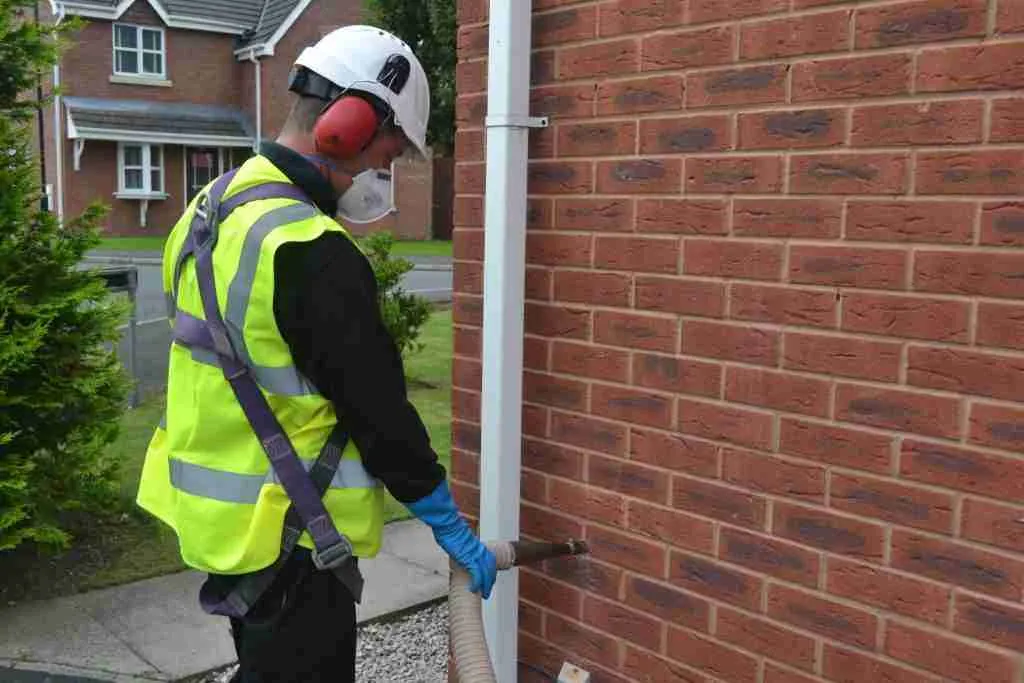
Why Cavity Wall Insulation Is Important
When you heat your home, you expect that warmth to stay inside. But with uninsulated cavity walls, as much as 35% of your heat can be lost straight through the walls. That’s money out of your pocket and comfort out of your living room.
The benefits of insulating those gaps are immediate and long-lasting:
- Lower energy bills: Typical savings range from £200 to £600 a year, depending on the size and type of property.
- Improved EPC rating: A better energy performance score not only makes your home cheaper to run but can also add value if you decide to sell.
- Year-round comfort: Insulation doesn’t just help in winter. In summer, it slows down heat coming in, keeping your home cooler.
- Reduced carbon footprint: Less wasted heat means fewer emissions — a small but real step toward a greener home.
Another reason cavity wall insulation is so appealing is its practicality. Unlike internal or external wall insulation, it’s relatively simple and non-intrusive. Installation usually takes just a few hours, with minimal disruption. And once it’s in, it’s designed to last 25–40 years — effectively a lifetime improvement for most homeowners.
Think of it this way: cavity wall insulation is one of the quickest, most cost-effective energy upgrades you can make. It helps protect you from rising energy prices while making your home more comfortable to live in every day.
For many families, the difference is noticeable almost straight away, warmer rooms, fewer draughts, and lower bills. And with government funding available, the barrier of cost is removed or at least heavily reduced.
In short: if your home has cavity walls, insulating them is one of the smartest moves you can make.
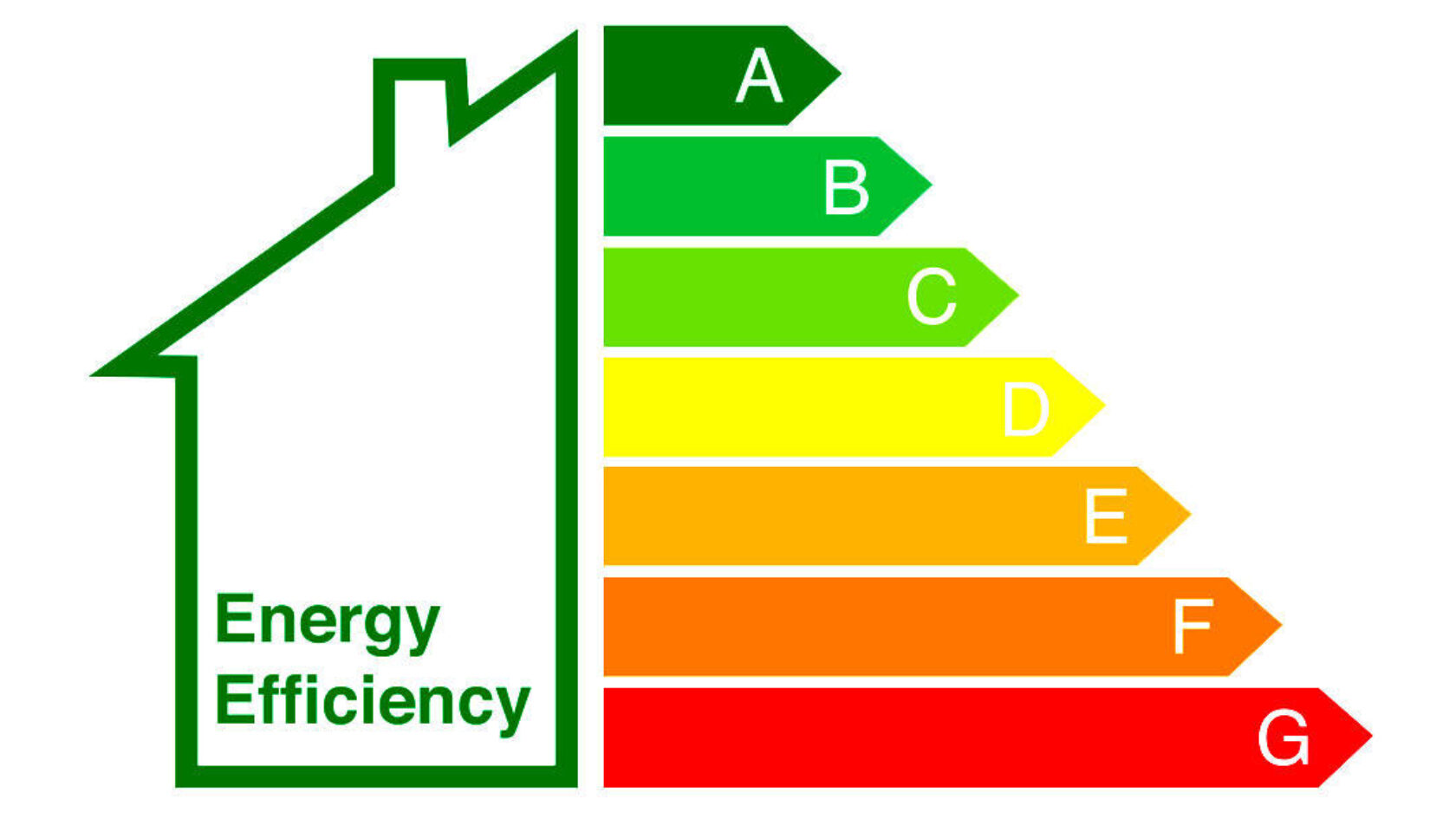
How Much Can You Save With Cavity Wall Insulation?
One of the biggest reasons homeowners look into cavity wall insulation is the savings. Heating a property without insulation is a bit like trying to fill a bucket with holes in it, no matter how much energy you put in, a lot of it escapes.
By filling those cavities, you can hold onto far more of the heat you pay for. On average, annual savings look like this:
- Detached house: £400–£600
- Semi-detached house: £200–£350
- Terraced house: £180–£270
- Bungalow: £200–£300
These aren’t one-off figures. They’re recurring savings, year after year. And with energy prices as unpredictable as they’ve been, that protection matters. Even if bills rise again in the future, your insulation will continue reducing how much you need to spend.
It’s also worth thinking beyond bills. Warmer rooms, fewer draughts, and a home that’s more comfortable to live in every day, those are benefits you feel immediately, not just at the end of the month. And because insulation boosts your EPC rating, it can even add value to your home if you decide to sell.
Put simply, cavity wall insulation pays for itself many times over during its 25–40 year lifespan. And with government funding available to cover all or most of the cost, it’s one of the few home improvements that starts saving you money almost from day one.
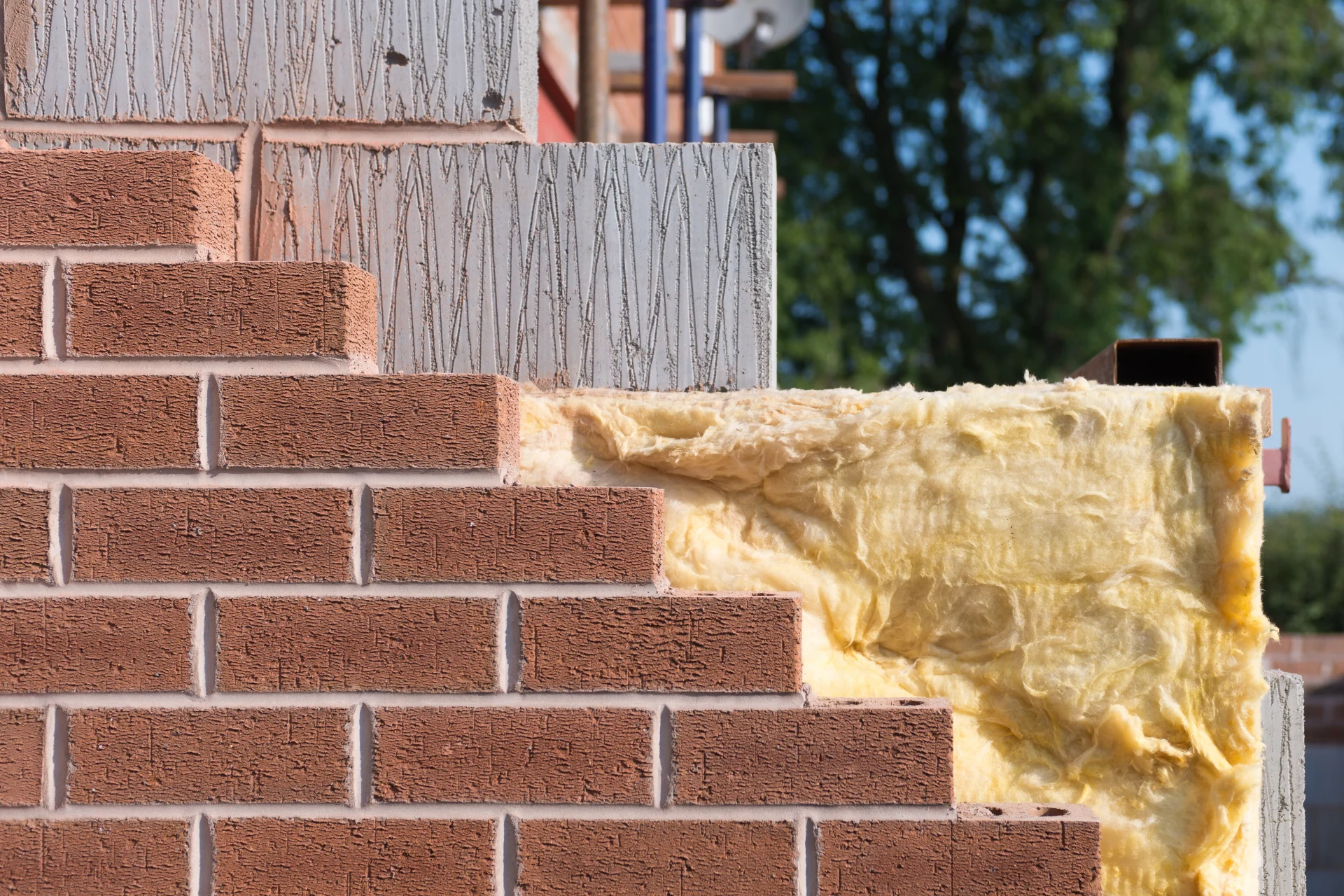
What’s Included in the Cavity Wall Insulation Grant?
If you’re wondering what the grant actually covers, the short answer is: pretty much everything you need to get the job done properly. The funding is designed to remove the barriers that often stop people from insulating their homes. That means no hidden extras and no unexpected bills halfway through.
Here’s what’s typically included:
- Free property survey: A qualified surveyor checks whether your walls are suitable and identifies the right type of insulation.
- Professional installation: Approved installers drill small holes into the mortar, inject insulation, and make good the walls afterwards. The process usually takes just a few hours.
- All materials and labour: From the insulation itself (polystyrene beads, mineral fibre, or foam, depending on your home) to the equipment and manpower needed.
- Funding coverage: ECO4 can often cover 100% of costs, while GBIS usually provides partial funding. Either way, the grant significantly reduces what you’d normally pay.
- Quality assurance: Work is carried out by certified teams and checked for compliance, so you know it’s been done to standard.
- Warranties included: For peace of mind, installations come with guarantees that protect your home for years to come.
The aim is to make the whole process as straightforward as possible. You don’t have to worry about sourcing installers, chasing paperwork, or negotiating costs. Everything is handled by specialists who know the schemes inside out.
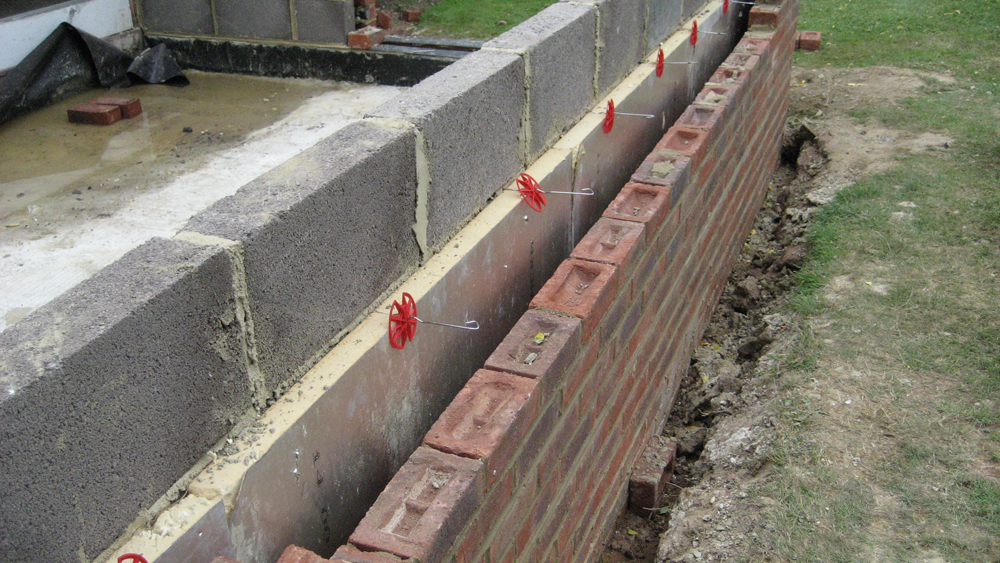

Types of Cavity Wall Insulation
Not every home is the same, and the type of insulation used depends on your property and what will deliver the best results. During your free survey, a qualified assessor will recommend the most suitable option.
The main types are:
- Polystyrene Beads (EPS Beads):
The most popular choice today. Small beads are blown into the cavity, where they lock together and provide excellent thermal efficiency. They’re lightweight, resistant to moisture, and ideal for most modern homes. - Mineral Wool / Fibre:
A tried-and-tested material that’s been used for decades. The fibres are blown into the cavity to create a dense insulating layer. It’s durable, fire-resistant, and particularly good for reducing sound transmission as well as heat loss. - Foam Insulation:
Less common, but still used in certain situations. Foam can be injected into cavities where beads or fibre might not be suitable, often in more complex wall structures.
The type of material used isn’t something you need to decide yourself. That’s the role of the surveyor, who will check your walls, property age, and any existing insulation before recommending the best fit.
The end result is the same: warmer rooms, lower bills, and insulation designed to last for decades.
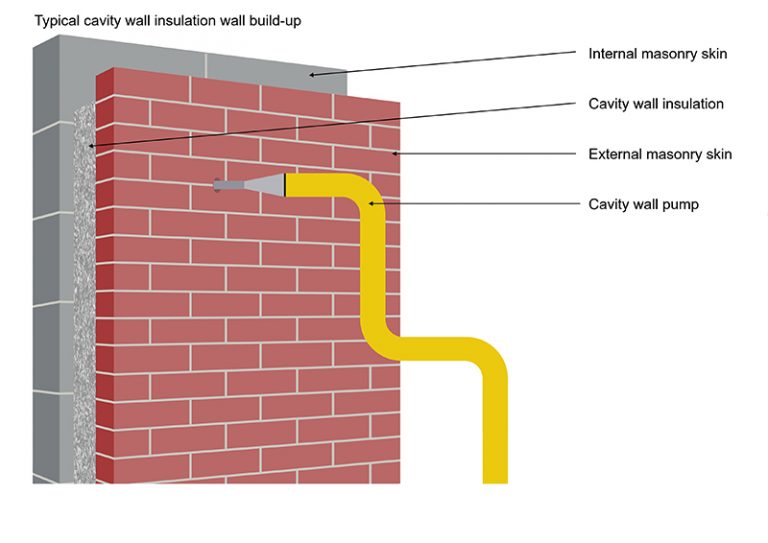
Can I Get a Grant If I Already Have Cavity Wall Insulation?
No, if your home already has cavity wall insulation in place, you won’t qualify for further grant funding under ECO4 or GBIS. These schemes are aimed at properties that have never been insulated, as that’s where the biggest energy savings can be made.
This sometimes catches people by surprise. Insulation installed 20–30 years ago may not be as effective as modern methods, and it’s true that older materials can deteriorate over time. However, current government grants don’t extend to top-ups or replacements.
That said, if you suspect your insulation isn’t performing as it should, it’s still worth getting a professional survey. In some cases, issues can be resolved through maintenance or repair, but this would need to be arranged privately rather than through a grant scheme.
In short: grants only apply if your home has no existing cavity wall insulation.
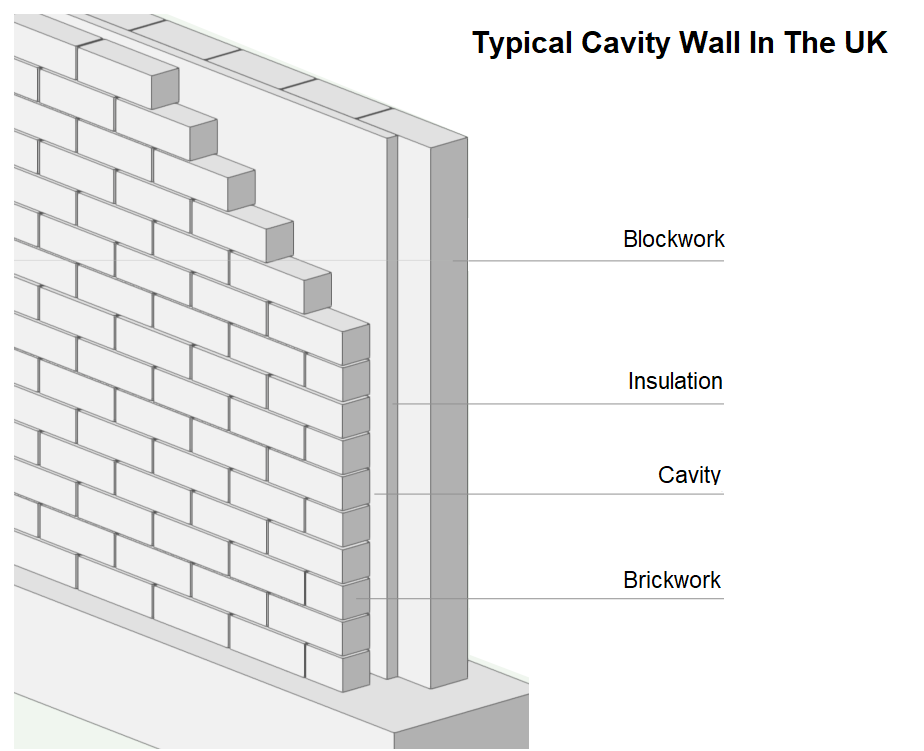
Our Application & Installation Process
Applying for a cavity wall insulation grant might sound complicated, but in practice, it’s simple. We’ve refined the process so homeowners can go from first enquiry to finished installation with minimal hassle. Here’s how it works:
- Check Eligibility
Start with a quick online form or a phone call. We’ll run through the basics, your property type, EPC rating, and whether you or someone in your household receives qualifying benefits. - Free Property Survey
A certified surveyor visits your home to confirm your walls are suitable and to recommend the right type of insulation. This part also checks whether you have any existing insulation that needs topping up or replacing. - Application Submission
Once we’ve confirmed eligibility, our team handles the application paperwork for ECO4, GBIS, or both. You don’t have to deal with forms or back-and-forth with scheme providers, we manage it for you. - Installation
Approved installers carry out the work. For most properties, it takes just a few hours. Small holes are drilled in the mortar, insulation is injected, and the walls are made good afterwards. - Quality Check & Sign-Off
After installation, the work is checked to ensure it meets all scheme and quality standards. - Aftercare & Warranties
You’ll receive documentation and warranty information for peace of mind. If there are any questions after the install, we’re here to help.
From start to finish, the process usually takes 3–6 weeks, depending on demand and scheduling. The installation itself is quick and causes minimal disruption — no need to move out or rearrange your life.
Why Choose Free Energy Savings?
When it comes to government energy schemes, the process can feel overwhelming. Different funding rules, paperwork, and eligibility criteria often leave homeowners unsure where to start. That’s where we step in.
At Free Energy Savings, we specialise in securing ECO4 and GBIS grants for cavity wall insulation and we manage the entire process from beginning to end. That means you don’t have to spend hours chasing forms or worrying about whether you’re applying correctly.
Here’s why thousands of households choose us:
- Nationwide coverage: Wherever you are in the UK, we can arrange surveys and installations.
- Fast-track applications: We know the schemes inside out, so we can move your application along quickly.
- No-obligation surveys: Your property will be assessed at no cost, with clear guidance on whether funding applies.
- Certified installers only: All work is carried out by approved professionals and checked for quality.
- Full support: From first call to aftercare, our team is on hand to answer questions and keep things simple.
We’ve helped households across the country lower their bills and make their homes more comfortable with grant-funded insulation. For many, the surprise is just how easy it is once someone else takes care of the details.
So if you’ve been putting off applying because you thought it would be complicated, it doesn’t have to be.
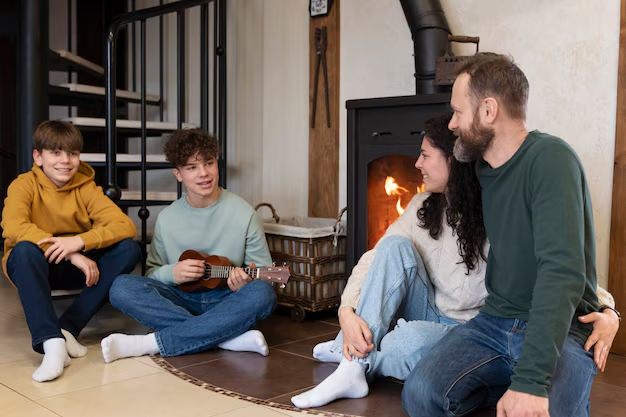
Ready to Apply for a Cavity Wall Insulation Grant?
Cavity wall insulation is one of the simplest and most effective ways to make your home warmer, cheaper to run, and more energy efficient. With support from government schemes like ECO4 and GBIS, the cost barrier is removed, meaning many households can get insulation either fully or heavily funded.
The benefits go well beyond lower bills. You’ll notice warmer rooms in winter, cooler rooms in summer, and fewer draughts around the house. Your EPC rating will improve, which can add value if you ever sell or rent out the property. And with insulation designed to last decades, the savings add up year after year.
At Free Energy Savings, we take care of the whole process: from eligibility checks and surveys through to installation and aftercare. There’s no paperwork stress, no complicated jargon, just straightforward advice and professional support at every step.
If you’ve been putting it off, now is the time. Funding is available, but it won’t be around forever.
Frequently Asked Questions
In many cases, yes. If you qualify under the ECO4 scheme (for households on certain benefits or low incomes), the grant often covers 100% of the cost. That means survey, installation, materials; everything. Under GBIS, the funding is usually partial, so you may need to contribute, but it still reduces the overall cost significantly.
Yes. That’s where the GBIS scheme comes in. It’s designed for a wider group, not just those on benefits. If your property has an EPC rating of D or below and falls into the right council tax band, you may qualify for partial funding.
ECO4 vs GBIS – what’s the difference?
- ECO4: Benefits-based, often fully funded.
- GBIS: Broader eligibility, usually part-funded.
Both are backed by the government and managed through Ofgem and major energy suppliers. The right scheme for you depends on your household circumstances and property.
Typical annual savings range from £180 to £600, depending on property size. For example, a detached house can save £400–£600 a year, while a terraced home might save £180–£270. Those savings repeat every year, so over the lifespan of the insulation (25–40 years), the total is substantial.
Most cavity wall insulation jobs are completed in just a few hours. A team drills small holes into the mortar joints, injects insulation, and then makes the holes good. You don’t need to move out, and disruption is minimal.
Not much at all. The work is done from outside the property, so there’s no need for contractors to be inside your home. You might notice some noise during drilling, but it’s a quick process and everything is tidied up before the team leaves.
Yes, both can apply. If you’re a tenant, you’ll need your landlord’s permission before any work goes ahead, since the property belongs to them. Landlords can benefit too, as insulation improves the EPC rating of their properties, which is increasingly important for rental compliance.
When installed properly, cavity wall insulation is built to last 25–40 years. In most cases, that’s effectively the lifetime of the property. Once in, you shouldn’t need to replace it again and warranties are provided for added peace of mind.
If your home already has cavity wall insulation, even if it was installed decades ago, you won’t be eligible for a grant under ECO4 or GBIS. The funding is only available for properties that have never had their cavities filled before.
While it’s true that older fibre-based insulation can sometimes deteriorate, the schemes don’t currently cover top-ups or replacements. If you’re concerned about the performance of existing insulation, a professional survey can check for issues, but any remedial work would need to be arranged privately.
Yes. Adding cavity wall insulation is one of the quickest ways to boost your home’s Energy Performance Certificate (EPC) rating. That’s important not just for reducing bills but also for property value, as buyers and tenants increasingly look at EPC scores when making decisions.
This is a common concern, usually based on older stories. Modern cavity wall insulation uses breathable materials and installation methods designed to prevent damp. Before any work, a surveyor checks that your property is suitable (for example, ensuring there are no existing damp problems). If issues are spotted, they’re flagged before installation goes ahead.
Yes. Many households combine cavity wall insulation with loft insulation, boiler upgrades, or even solar panels under the same government-backed schemes. Doing so can maximise efficiency, savings and often makes sense while funding support is available.
In almost all cases, no. Cavity wall insulation is considered a minor improvement and doesn’t require planning consent. The only exceptions are if your home is listed or located in a conservation area, where special rules may apply. Even then, it’s usually straightforward once the right permissions are in place.
Most homes built after the early 1990s were constructed with insulation already in the cavity walls. If that’s the case, you won’t be eligible for a cavity wall insulation grant, because funding only applies to properties that have never been insulated before.
That doesn’t mean you’re excluded from all support, though. Depending on your property and circumstances, you could still qualify for other upgrades through the same government schemes, such as:
- Loft insulation grants – ideal if your roof space isn’t insulated or only has minimal coverage.
- Free boiler replacement or upgrade grants – available under ECO4 for households with old, inefficient boilers.
- Solar panel grants – for homes looking to cut electricity costs and generate renewable energy.
- Air source heat pump grants – where a low-carbon heating system is more suitable.
If your walls are already insulated, we can check whether you qualify for these alternative measures instead.
Yes, especially if mineral fibre is used. While the primary purpose is to reduce heat loss, insulation can also make a noticeable difference in cutting down outside noise. For households on busy roads, that can be an unexpected bonus.
Most people do. Homes feel warmer and less draughty almost immediately after installation. It’s not uncommon for households to report turning their heating down sooner or needing it on for fewer hours in the day.
No, eligibility checks and surveys arranged through Free Energy Savings are free of charge. If you qualify under ECO4, the installation itself can also be free. With GBIS, a contribution may sometimes be needed, but you’ll always know upfront.
Simply complete an online eligibility form or give us a call. From there, we’ll arrange your survey and handle the grant application for you. The whole process is designed to be as simple as possible.

What Our Customers Have To Say
Read More Of Our Reviews On Trust Pilot
We’ve had some bad experiences with installers in the past, but Free Energy Savings was a breath of fresh air. They were helpful and patient, answering all of our questions about the ECO4 scheme and making sure we understood how it worked. The installation was done quickly and professionally, and the team was extremely respectful of our home.
- Jessica B
We were a bit unsure about how the ECO4 grant worked, but Free Energy Savings made everything so simple. The team explained every detail of the grant and the benefits from a new boiler installation. When it came time for the installation, they arrived right on schedule and worked hard to get everything set up. What impressed me most was the attention to detail….
- Amelia L
Free Energy Savings exceeded all of our expectations. From the moment we contacted them, they were responsive and informative. The team helped us through the paperwork for the ECO4 grant, which was a big help since we had no idea where to start. The installation crew was friendly, professional, and fast. It’s been a couple of months now, and we’re already…



